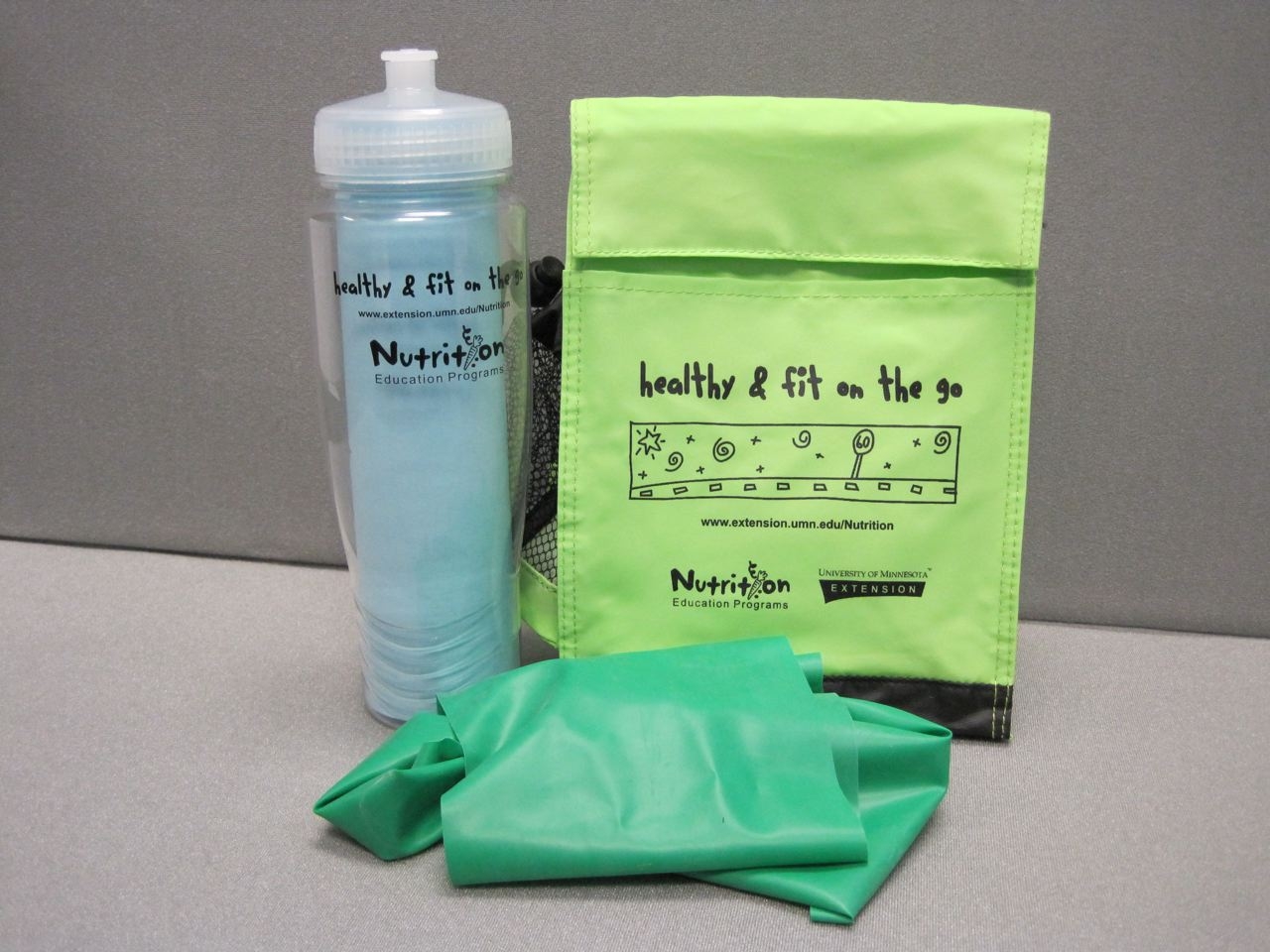
This week we would like to spotlight Healthy & Fit on the Go, a program designed to inspire behavior change by providing tips and tools for self-care, healthy eating and physical activity for University of Minnesota Extension staff.
The Program Basics
Healthy & Fit on the Go is a program designed to inspire behavior change by providing tips and tools for self-care, healthy eating and physical activity for Extension staff who spend a great deal of their work day in the car. The Physical Activity Guidelines are used as the basis for materials development. A review of the research in behavior change, nutrition and physical activity resulted in this series of 10 how-to tip cards packaged in a take-along kit with a lunch bag, water bottle and exercise band.
This program is designed as a worksite wellness initiative; a pilot was conducted with staff that included an education session featuring the materials in the kit: an insulated lunch bag with re-freezable ice pack, a medium-resistance exercise band, a BPA-free water bottle and 4 how-to tip cards for healthy eating choices and physical activity ideas.
Components of the kit were distributed and demonstrated at the Annual Conference of Extension Educators during October 2010.
Measuring Success
Betsy Johnson and her colleagues conduct end-of-conference surveys at the close of each annual conference where distribution, education and demonstration occur. In addition, kit-specific online surveys are sent at 3-month and 6-month intervals following the conferences. Online surveys include a request for input regarding the usefulness of the kit contents as well as suggestions for tip card topics.
Initial results indicated a strong motivation for changing behavior upon receipt of the portable kit with actual changes exceeding 40 percent for recipients after the first year.
Challenges
Johnson mentioned three main challenges for the program:
- Institutionalization: “It was relatively easy the first year to ensure all staff received the kit and participated in the education/demonstration. In years 2 and 3 we are experiencing some issues around distribution and education to new staff as well as distributing and educating staff about new tip cards.”
- Individual motivation: “Kit recipients are motivated to use the materials immediately following the conference as evidenced in post-conference surveys. But motivation decreases as time passes. The 3-month and 6-month surveys indicate less actual use/behavior change the further away from the conference. But, each survey does serve as a reminder about the kit and some become motivated by that reminder.”
- Cost: “As we expand to the staff in more program areas within Extension (and are faced with state budget crises) we are testing components of the kit for usefulness and cost-effectiveness as a way to motivate behavior change at a lower cost.”
Implementing a Similar Program in Your Community
Try using the following suggestions when implementing a program like this in your community:
As we’ve heard with other programs, get leadership buy-in. With upper management support for the effort, it will more likely be integrated into the planning for a conference or program; without that support, all expense and effort could be wasted.
Develop a systematic reminder system to maintain the motivation for behavior change that follows the education sessions.
Respond to suggestions for improvements, changes or additional tips and materials; it must be relevant to the user or it won’t be used.
If materials and education are distributed once a year at a conference, plan for 3-5 years worth of new materials to keep it fresh and to create the expectation that this wellness program is part of the conference culture.